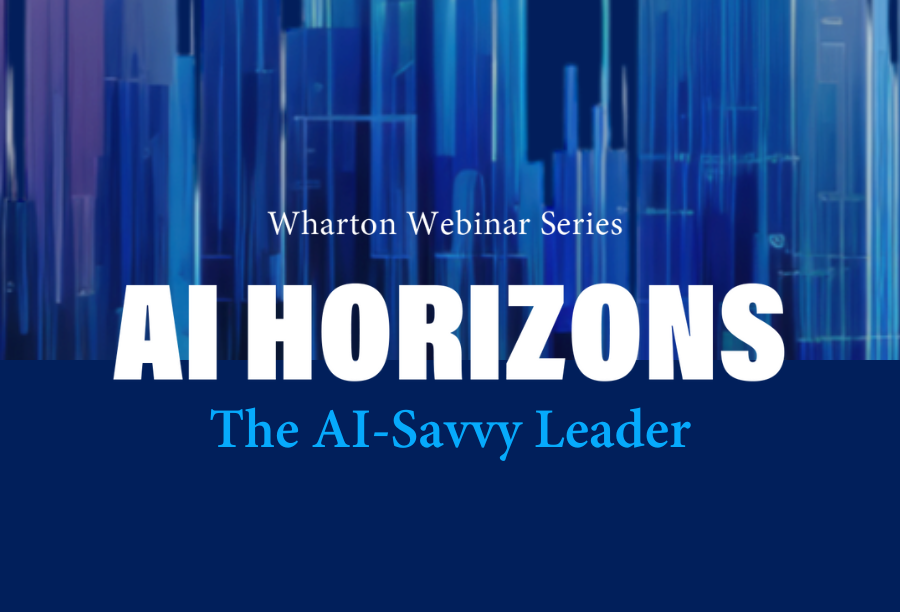Behavioral scientist David De Cremer didn’t have to look far to find inspiration for his most recent book, The AI-Savvy Leader: Nine Ways to Take Back Control and Make AI Work.
As a teaching professor, researcher, and consultant to businesses worldwide, he’s seeing firsthand the apprehension among business leaders racing to make generative artificial intelligence part of their operations. They’re under enormous pressure to integrate gen AI to drive efficiency, crush competition, and make more money.
“The ‘why’ of my book is because I see that people are struggling,” he said. “We are asking our business leaders to bring in a technology they actually don’t understand, but we ask them at the same time to adapt to it. It’s an extremely difficult balancing act.”
De Cremer, who is dean of Northeastern University’s D’Amore-McKim School of Business, talked about his book during a webinar for the AI Horizons series, which was created by AI at Wharton to showcase emerging knowledge in the field of artificial intelligence. The webinar was hosted by Wharton marketing professor Stefano Puntoni, who is a longtime colleague and friend of De Cremer.
Why AI Is the Next Great Leadership Challenge
De Cremer doesn’t deny the transformative power of AI, saying that it is all the things hyped by tech gurus — a game changer, a value creator, a once-in-a-lifetime opportunity. But it’s also the next great leadership challenge. He advises executives to think of AI as their ultimate change management project.
“Peter Drucker said once the best way to predict the future is to create it, and I think this really applies today to the role that business leaders can play in the process of AI adoption,” he said.
The first task, he said, is to align AI comprehension with organizational purpose. In other words, figure out how AI can serve the specific needs of business and its stakeholders. Don’t just implement AI out of FOMO or “fear of missing out.”
“Leaders also need to be visionary, because they need to make AI meaningful,” he said. “AI needs to become part of your vision and your mission, so people understand why why it is that this new coworker is brought in.”
De Cremer offered a few more tidbits from the book:
- Leaders should maintain a “humans-first, AI second” outlook by thinking about the ways AI can elevate their employees, not simply replace them.
- The savvy AI leader needs to be an excellent communicator who can bring together tech and business experts. The leader also needs to flatten communication hierarchies and open up silos around AI. It’s an iterative process, so everyone must be able to exchange information about what works and what doesn’t in order to perfect it.
- Traditional leadership skills are still needed. “I think the biggest insight here is that leadership behaviors that have been successful in the past are also going to be successful today, but in a different relationship,” De Cremer said.
Puntoni, who also approaches AI from a behavioral context, agreed with De Cremer’s points. He raises similar ones in his own book, Decision-driven Analytics.
“The conversation about leadership is too often missing from the discussions around AI, and I think that is really very much to the detriment of organizations,” Puntoni said. “Even if you take a tech focus, I think it is crucial to realize that it is not going to work until it is functional to the vision and objective of the company.”



